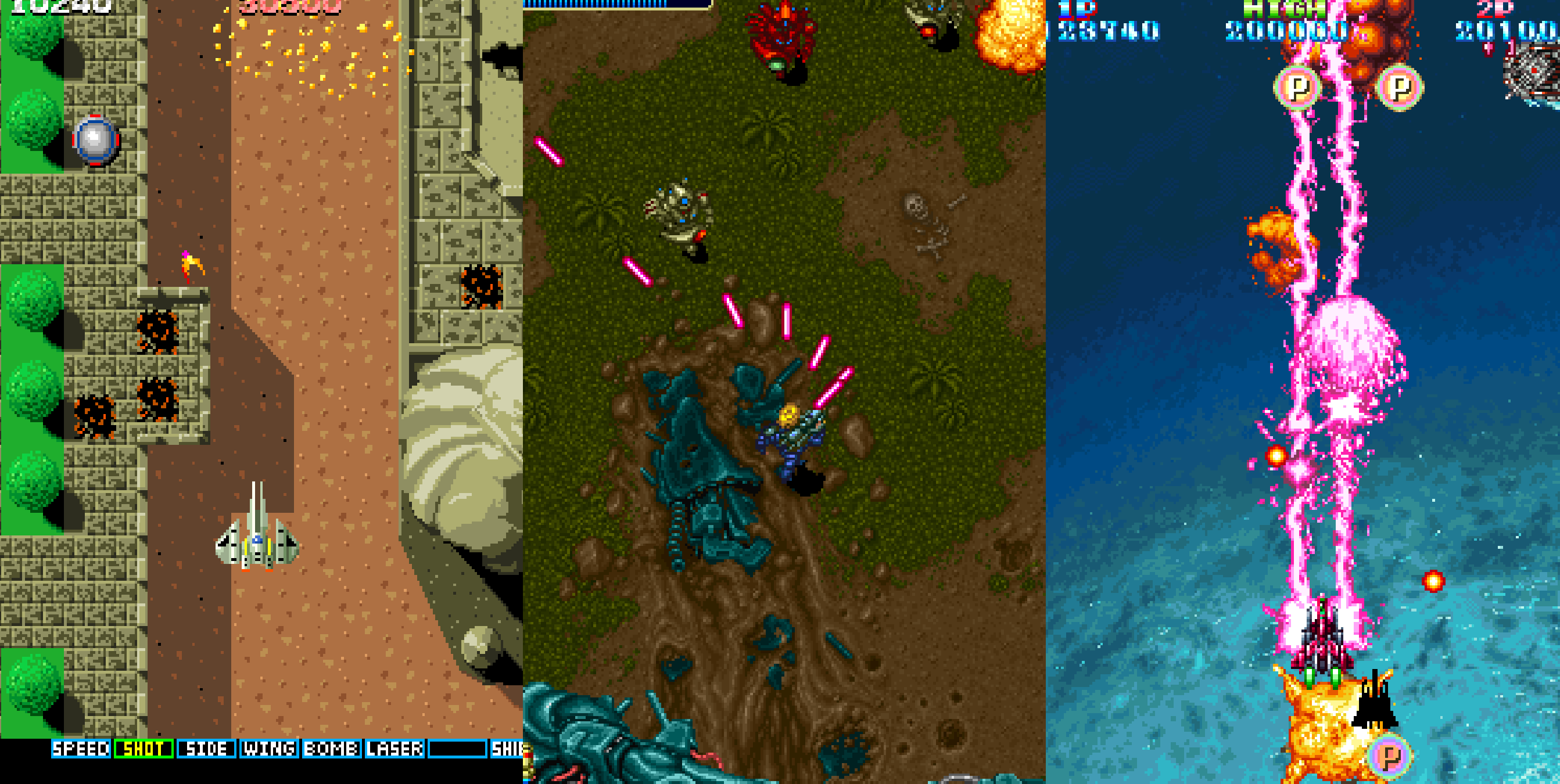Introduction
Toaplan may not have achieved the same household recognition as Nintendo or Sega, but in the world of arcade gaming, it carved out a legendary reputation. Founded in 1984, Toaplan specialized in creating innovative and challenging arcade shooters, setting new benchmarks for design and gameplay in the genre. Their legacy includes some of the most influential vertical and horizontal shooters of all time, and their design philosophies continue to influence game development decades later.
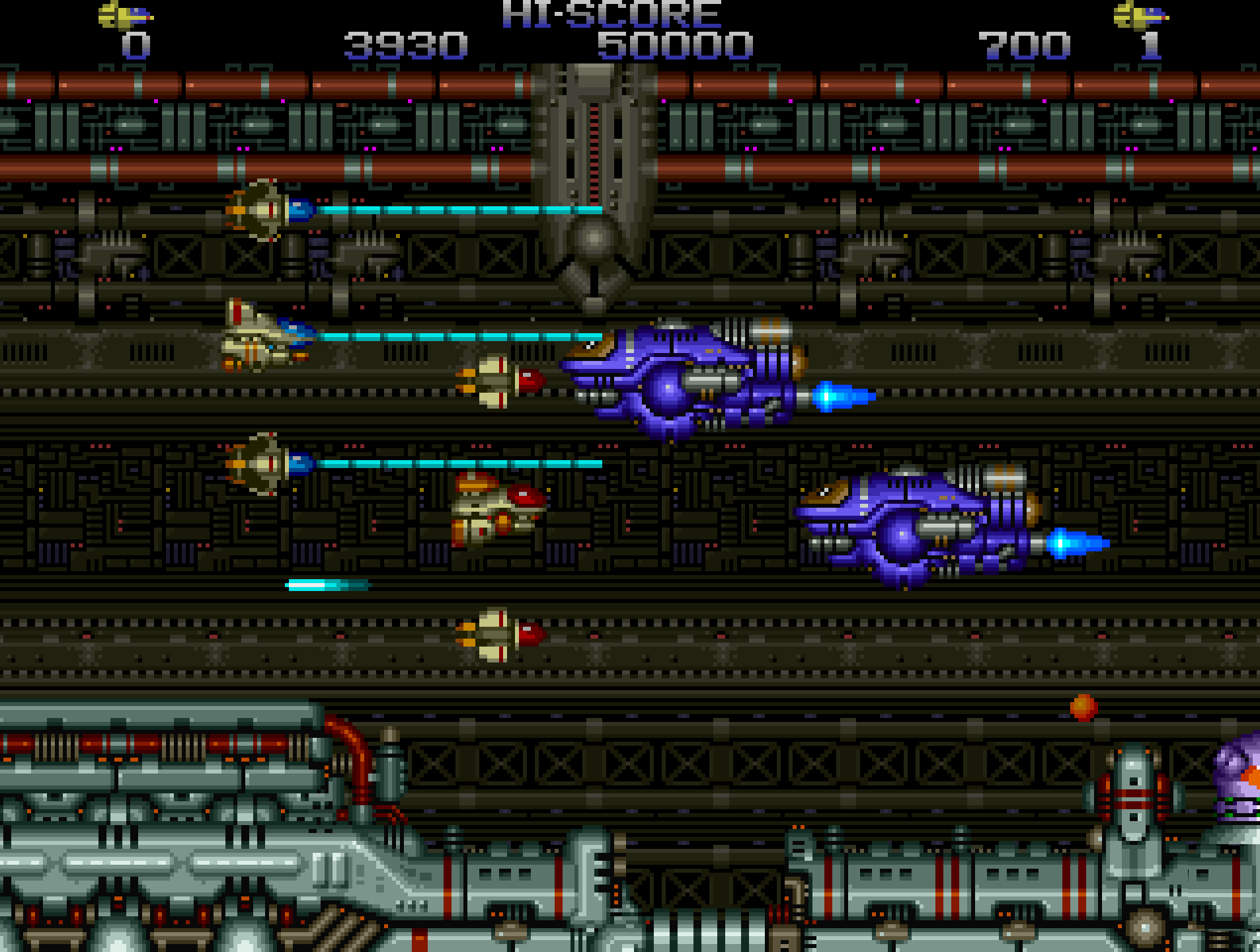
Early Beginnings in Arcade Gaming
Toaplan emerged from the ashes of several small game studios in the early 1980s, officially forming in 1984. They quickly focused on shoot ’em ups (shmups), a genre that was exploding in popularity following the success of titles like Xevious and Galaga. Toaplan’s unique approach emphasized intense difficulty, creative enemy patterns, and innovative power-up systems.
Key Early Releases
- Tiger-Heli (1985): A vertically scrolling helicopter shooter and Toaplan’s first breakout hit, notable for introducing smart bombs and a more strategic approach to level design.
- Slap Fight (1986): Also known as Alcon internationally, this vertical shooter introduced a Gradius-inspired power-up bar, giving players control over their weapon selection.
- Flying Shark (1987): Known as Hishouzame in Japan, this WWII-themed vertical shooter further established Toaplan as a master of tight, challenging gameplay.
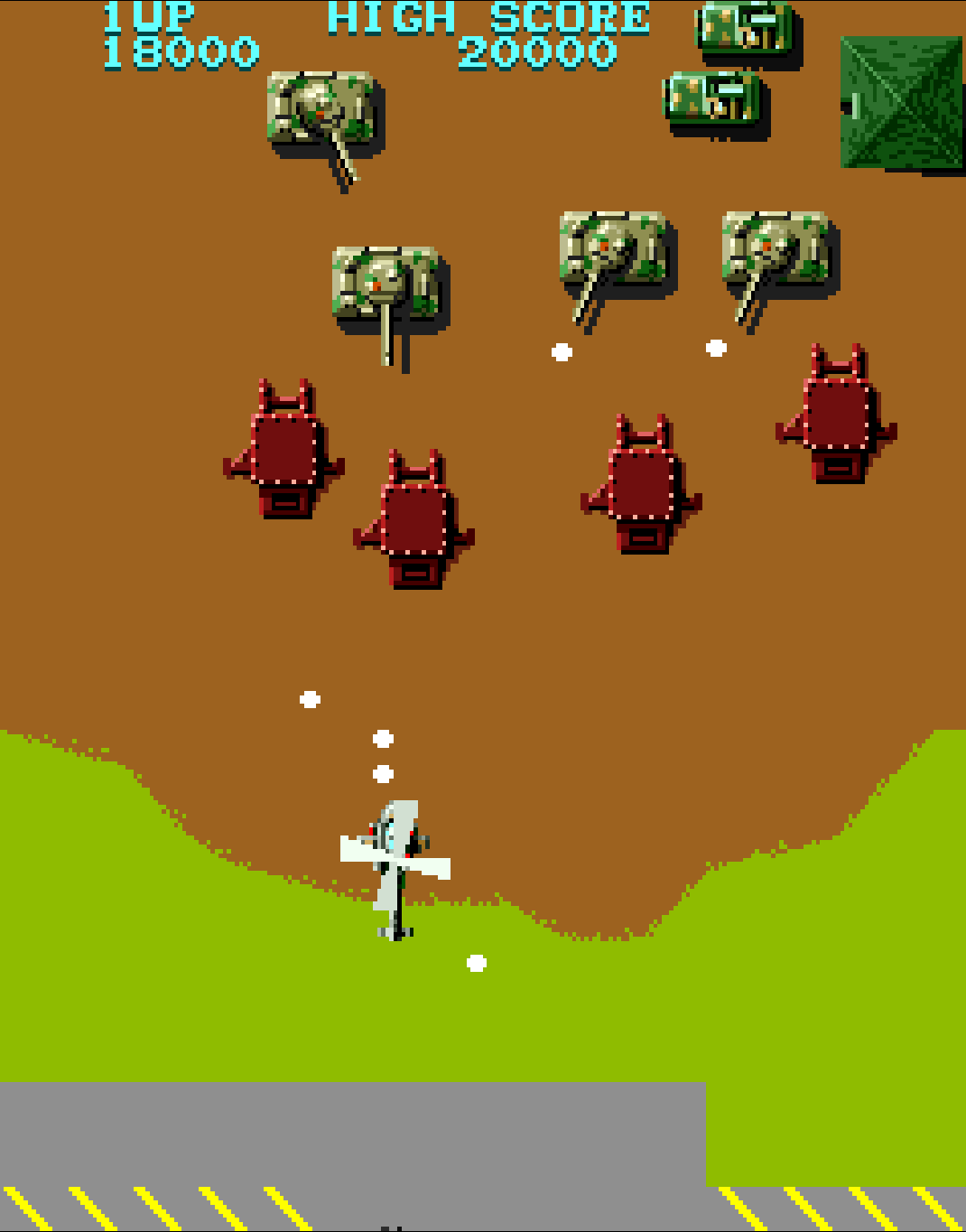
The Breakthrough: Truxton (1988)
The release of Truxton (known in Japan as Tatsujin) marked a turning point for Toaplan. The game became a global hit, beloved for its fast pace, unique weapon systems, and iconic skull-shaped bomb explosions.
Why It Stood Out
- Innovative Weapon Design: Three main weapon types with distinct upgrade paths.
- Challenging Gameplay: A difficulty curve designed to appeal to hardcore players seeking mastery.
- Sound & Music: A memorable soundtrack that captured the intensity of arcade shooters.
Truxton solidified Toaplan as one of the premier developers of arcade shooters.
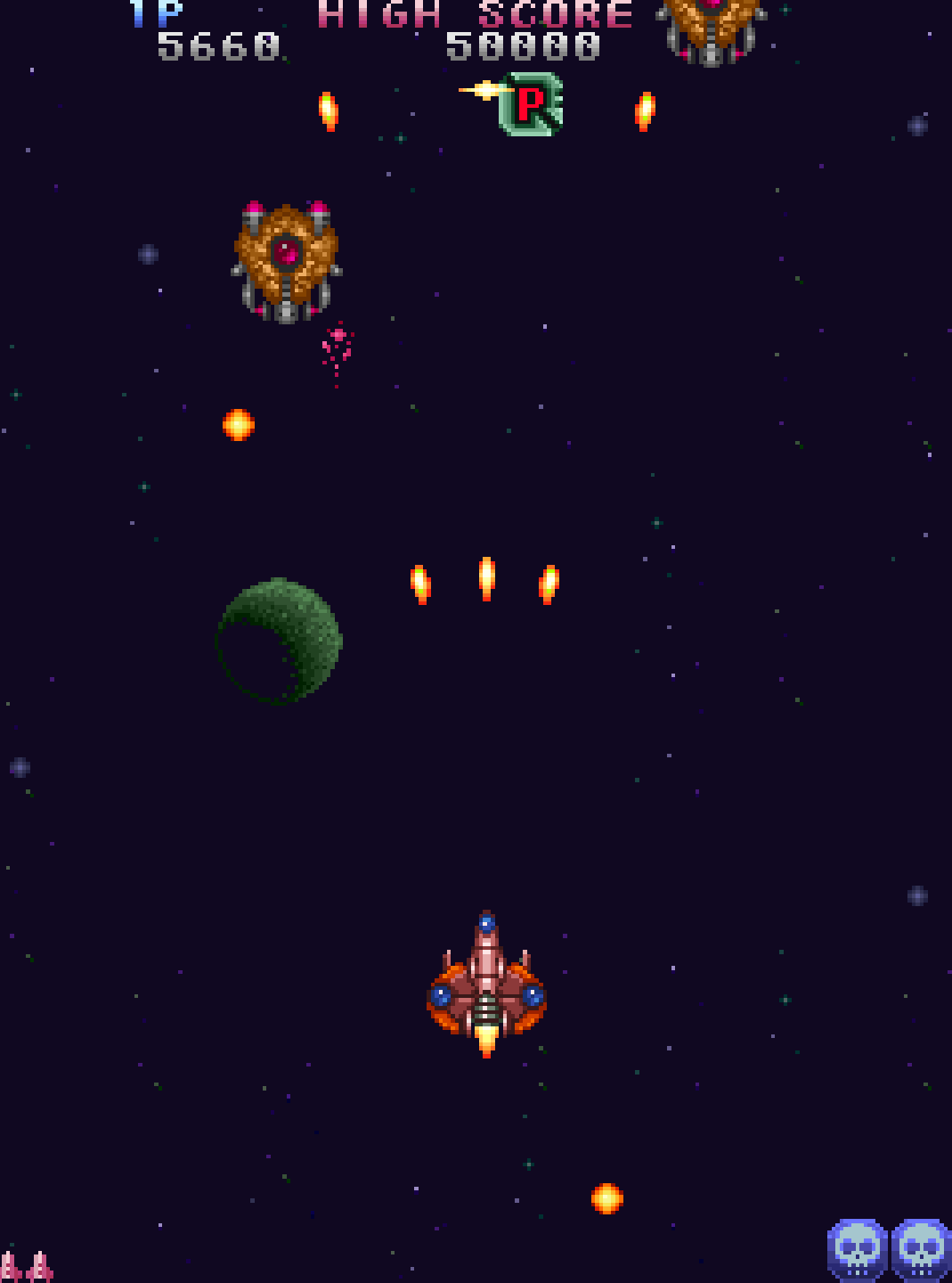
Iconic Arcade Titles
Zero Wing (1989)
- Famous for its “All Your Base Are Belong to Us” meme originating from its poorly translated home console version.
- Side-scrolling action with a tractor beam mechanic for grabbing and throwing objects.
- Showcased Toaplan’s experimentation beyond vertical shooters.

Out Zone (1990)
- A run-and-gun hybrid combining shooter mechanics with on-foot movement.
- Featured an innovative weapon-switching system and an energy bar mechanic.
- Became a cult classic and influenced its spiritual successor, FixEight.
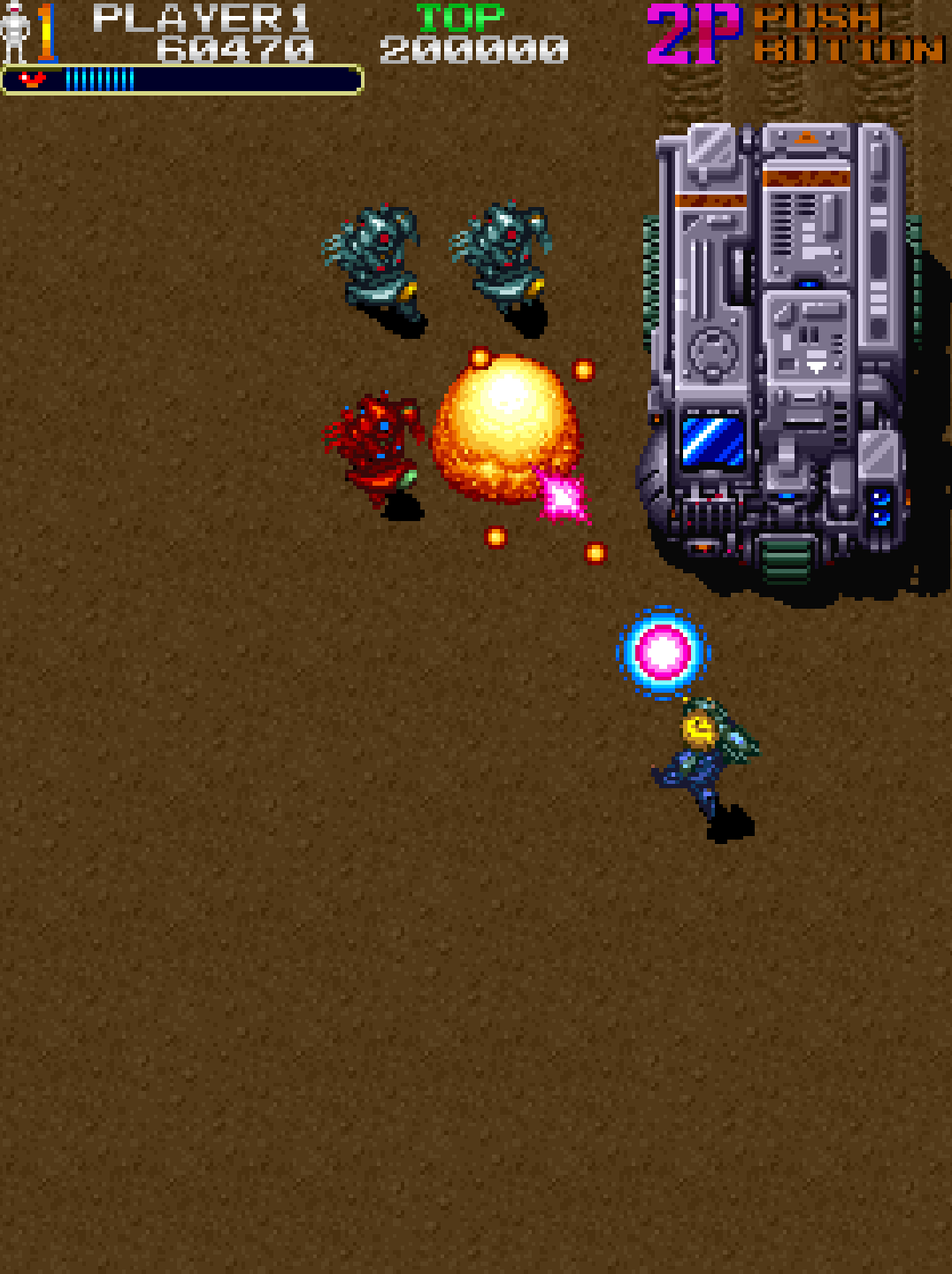
Batsugun (1993)
- Often considered the prototype for “bullet hell” shooters.
- Featured dense enemy fire patterns, massive screen-filling bosses, and deep scoring mechanics.
- One of Toaplan’s final releases before the company’s closure.
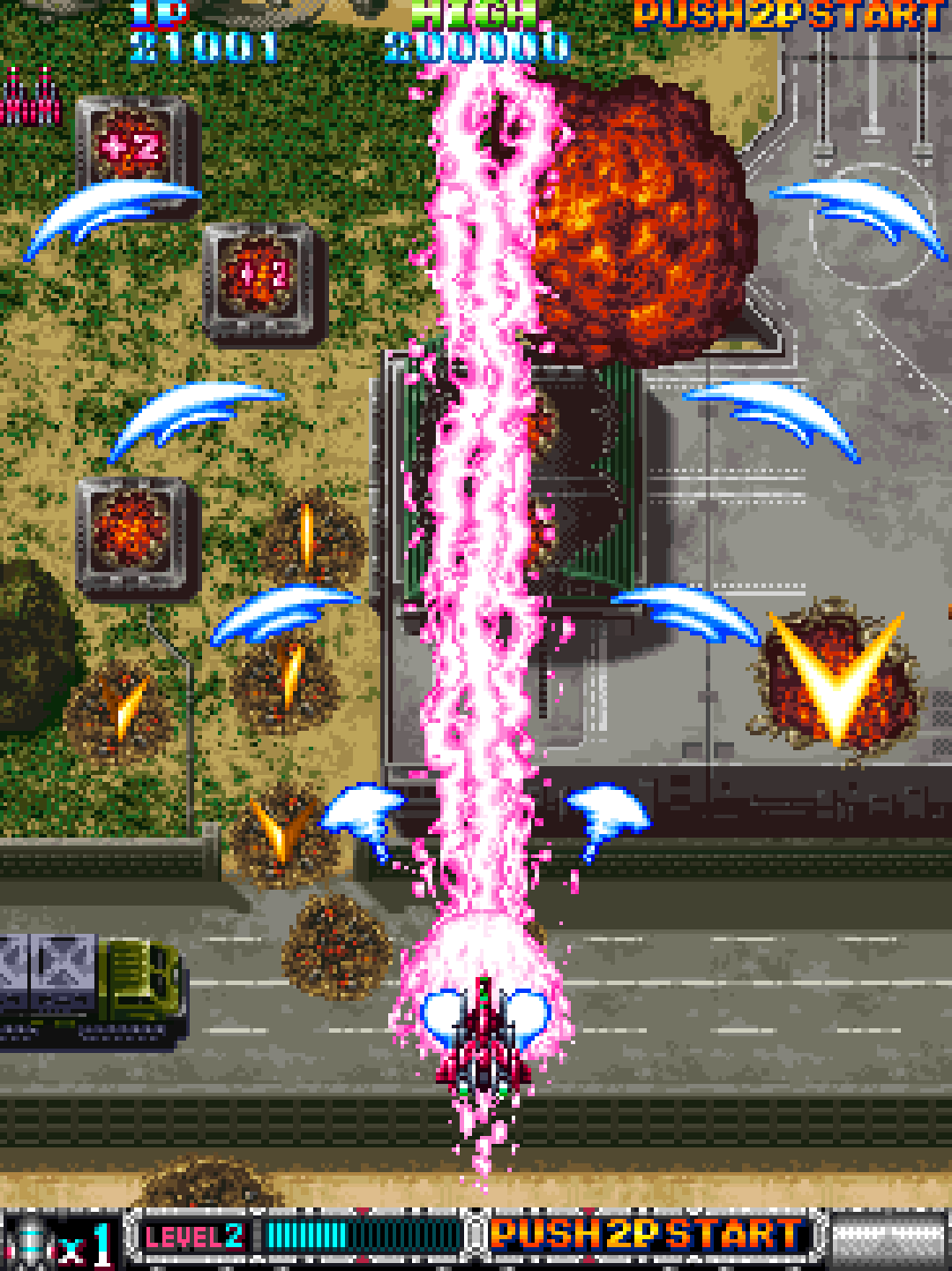
Cultural Impact and Legacy
- Birth of the Bullet Hell Genre: Batsugun laid the groundwork for “danmaku” shooters later perfected by companies like Cave.
- Spin-Off Studios: After Toaplan closed in 1994, many former developers formed influential studios such as Cave, Raizing, and Takumi.
- Technical Excellence: Toaplan was known for creating custom hardware optimized for fast, smooth shooters.
- Collector & Fan Appreciation: Original Toaplan arcade PCBs are highly sought after, and their games are frequently included in modern retro collections.
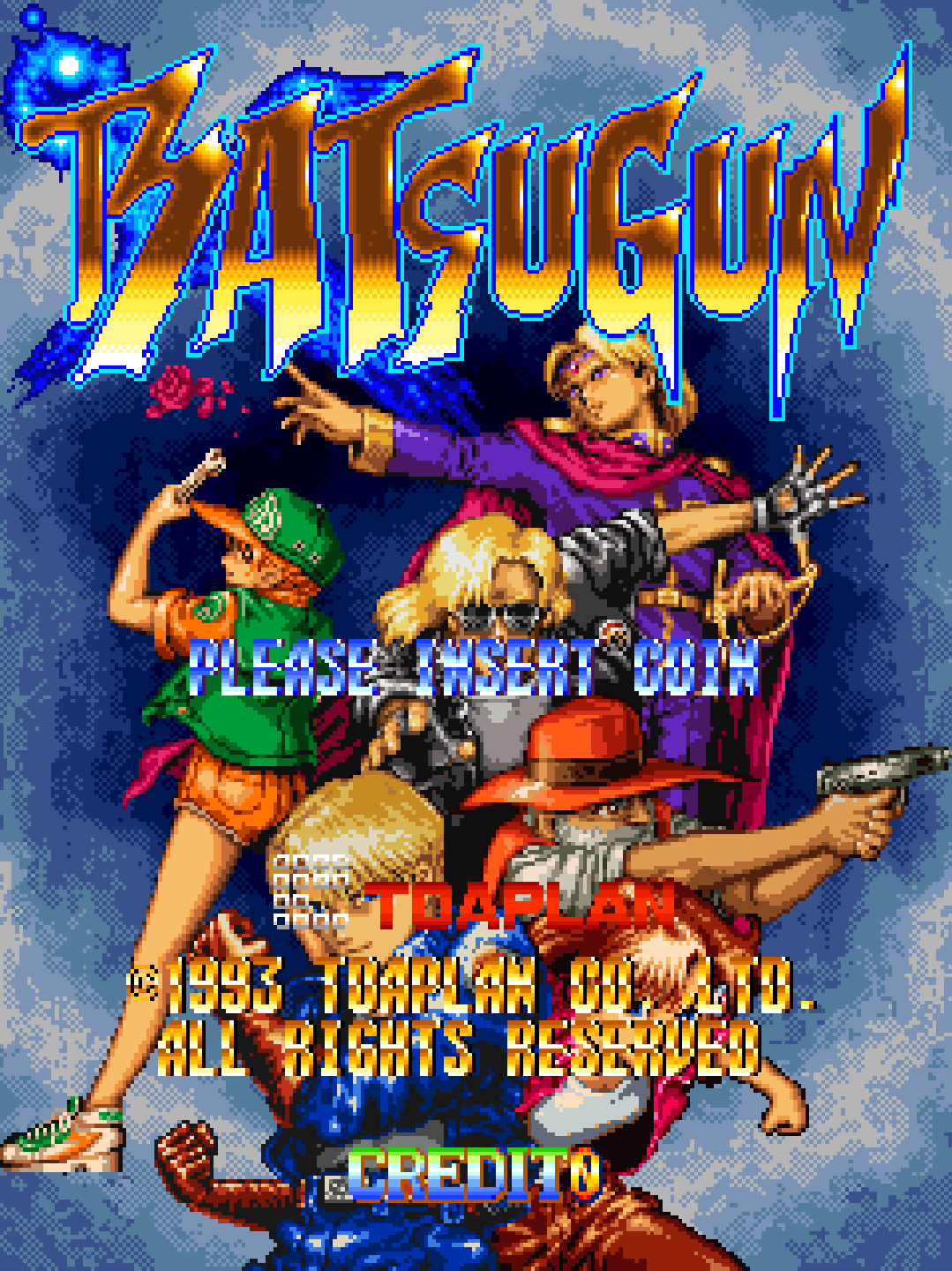
Fun Facts
- Unexpected Origins: Toaplan’s founding team included veterans from companies like Orca and Crux, which had collapsed prior to Toaplan’s formation.
- Zero Wing’s Meme Fame: The infamous “All Your Base Are Belong to Us” line appeared in the Mega Drive port, not the arcade version, yet it propelled Zero Wing into pop culture history years after its release.
- Long-Lasting Influence: Cave, formed by former Toaplan staff, continued Toaplan’s shooter legacy and remains a leader in the bullet hell subgenre.

Conclusion
Toaplan’s contribution to arcade gaming is defined by innovation, technical excellence, and a lasting influence on one of gaming’s most beloved genres. While the company’s lifespan was relatively short, its games helped shape the evolution of arcade shooters and inspired an entire generation of developers and players. From the accessible yet challenging Tiger-Heli to the genre-defining Batsugun, Toaplan’s legacy lives on as a testament to creativity and design mastery.
Want to Go Deeper Into Arcade History?
If the Top 100 left you craving more, dive into the complete stories behind some of the most iconic arcade genres and franchises. These articles explore the rise, innovation, and legacy of the games that shaped arcade culture:
- Donkey Kong’s Rise to Fame: How a Desperate Bet Created a Gaming Legend – The untold story of how Nintendo turned failure into a global icon, launching Mario, Miyamoto, and a new era of arcade storytelling
- What Makes an Arcade Game Great? – A deep dive into the design principles behind the most unforgettable cabinets of all time
- The Economics of Arcade Gaming: The Golden Age of Coin-Op – This article explores the full arc of arcade economics: the explosive rise, the industry-shaking crash, and the waves of reinvention that kept the business alive
- The Complete History of Mortal Kombat Arcade – How a gritty fighter became a pop culture phenomenon.
- Top 25 Hidden Gem Arcade Games of All Time - Unearth the overlooked classics that still shine bright for arcade enthusiasts today
- The History of Beat ’Em Up Arcade Games – From Double Dragon to Final Fight, here’s how brawlers ruled the late ’80s.
- The Complete History of Space Shooter Arcade Games – The genre that launched arcades into orbit.
- Top 25 Beat ’Em Up Arcade Games of All Time – Discover the ultimate ranking of the greatest beat ’em ups ever to hit arcades
- Defender: The Game That Changed Everything – How a risky bet and a radical vision helped redefine arcade design forever.

